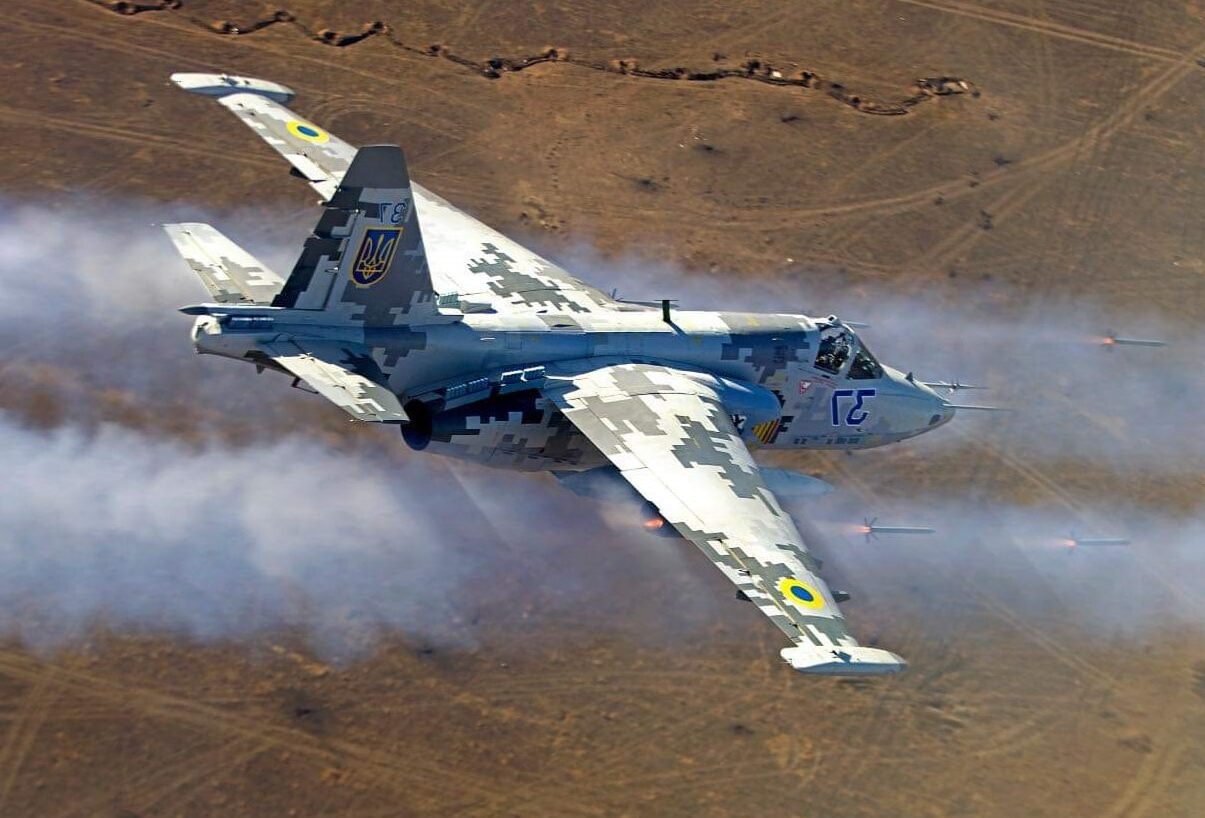Meet the Su-25 – Russia’s invasion of Ukraine has taken a significant toll on the weapons systems in both countries’ stockpiles. While Moscow’s dramatic loss of armored vehicles has been covered extensively in mainstream media, the Russian Air Force’s arsenal of airframes is also dwindling.
Russia and Ukraine have both deployed the Soviet-era Su-25 attack aircraft. In March, Russian state-affiliated media outlets revealed that Su-25 jets fly at low altitudes to carry out attack missions over Ukraine. Incidentally, it has suffered more casualties than any other airframe in the conflict. Despite this track record, the Kremlin still relies on the Soviet-era fighter platform.
Story of the Su-25
In the late 1960s, the Soviet Ministry of Defense wanted a fighter airframe that could provide close air support for infantry.
The USSR wanted to counter America’s own A-10 Thunderbolt II tank-busting jet with an indigenous and formidable design.
The Sukhoi defense giant ultimately produced the T-8 prototype. Within a decade, the first Su-25 variants were developed, and the platform took to the skies.
Designated by NATO as “Frogfoot,” Su-25 fighters have been exported extensively. They are currently flying for Russia, Afghanistan, Bulgaria, Georgia, Iran, Iraq, North Korea, and Ukraine. Although multiple S-25 variants have emerged over the years, all the airframes possess a cantilevered wing, a high aspect ratio, and high-lift devices. Earlier versions of the Frogfoot were powered by a pair of R-95Sh non-afterburning turbojets on both sides of the rear fuselage.
Weapons-wise, the Su-25’s wings have 10 pylons for carrying a variety of air-to-air and air-to-ground weapon systems. As detailed by Air Force Technology, “Air-to-ground missiles include Kh-23 (Nato codename AS-7 Kerry), Kh-25ML (AS-10 Karen) and Kh-29l (AS-14 Kedge). The air-to-air missiles carried on the smaller outboard pylons are the R-3S (AA-2D Atoll) and the R-60 (AA-8 Aphid). The aircraft can be fitted with UB-32A pods for 57mm S-5 rockets, B-8M1 pods for 80mm S-8 rockets, S-24 240mm guided rockets and S-25 330mm guided rockets.”
Additionally, the Frogfoot can be equipped with 350-to-670 kilogram laser-guided bombs, 500 kg incendiary devices, and cluster bombs.
How has the Frogfoot fared in Ukraine?
According to Russian state media outlets, the Su-25 is often accompanied by the Su-34 fighter in combat missions over Ukraine. The Russian Air Force reportedly uses its Su-34s to cover the Frogfoots as they fly at very low altitudes to carry out attack missions.
Since the beginning of the year, at least 16 Frogfoots have been shot down, and many more have been damaged. Considering the number of Su-25s that have been taken out over the last 15 months, perhaps Russia’s “flying tank” is not performing up to standards.
Maya Carlin, a Senior Editor for 19FortyFive, is an analyst with the Center for Security Policy and a former Anna Sobol Levy Fellow at IDC Herzliya in Israel. She has by-lines in many publications, including The National Interest, Jerusalem Post, and Times of Israel. You can follow her on Twitter: @MayaCarlin.
This piece has been updated to correct an issue with the photo loading.
From 19FortyFive
Ukraine Footage Shows U.S. M982 ‘Excalibur’ Cut Through Russian Artillery
How To Sink A $3 Billion Dollar Submarine: Leave A Hatch Open
Smashed To Pieces: Video Shows Ukraine Hitting Russian Air Defenses

